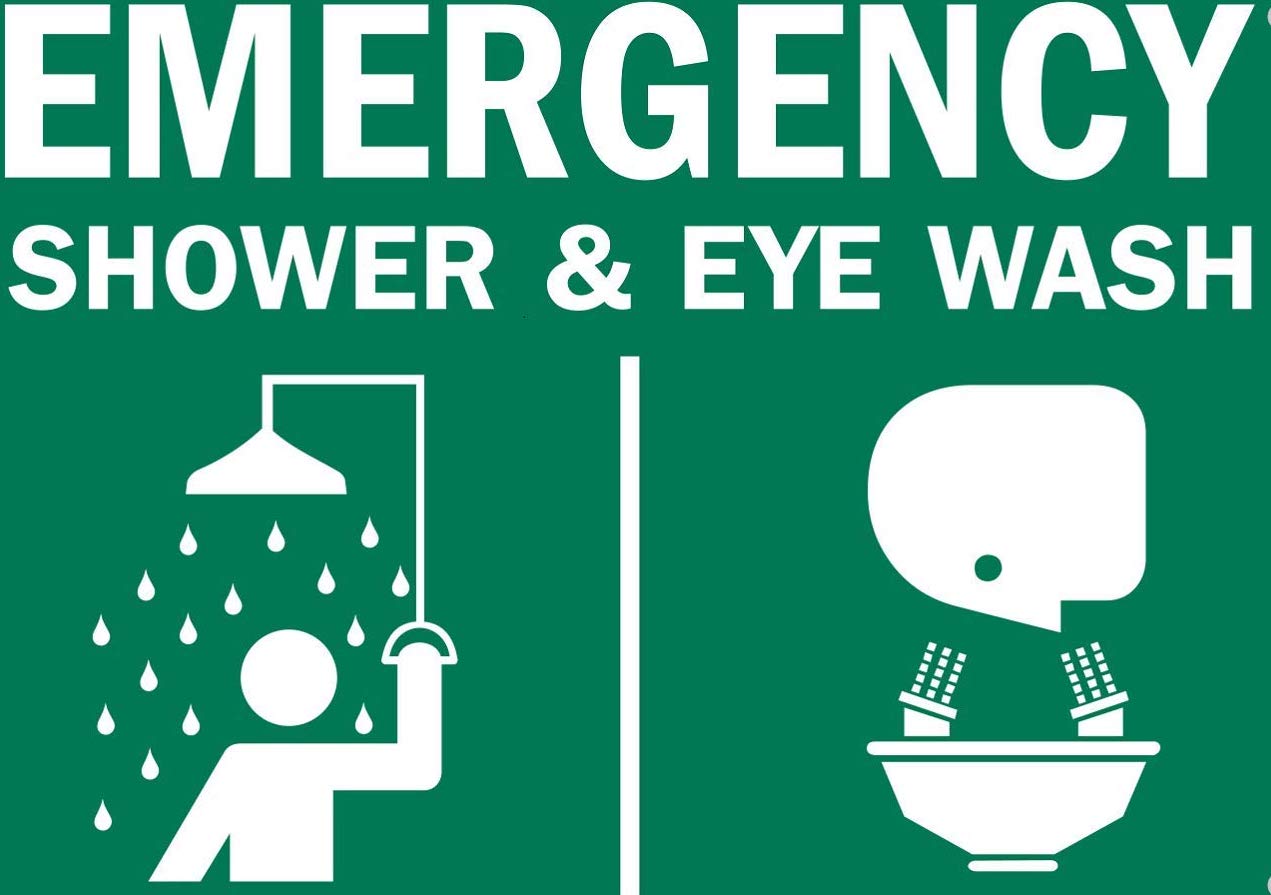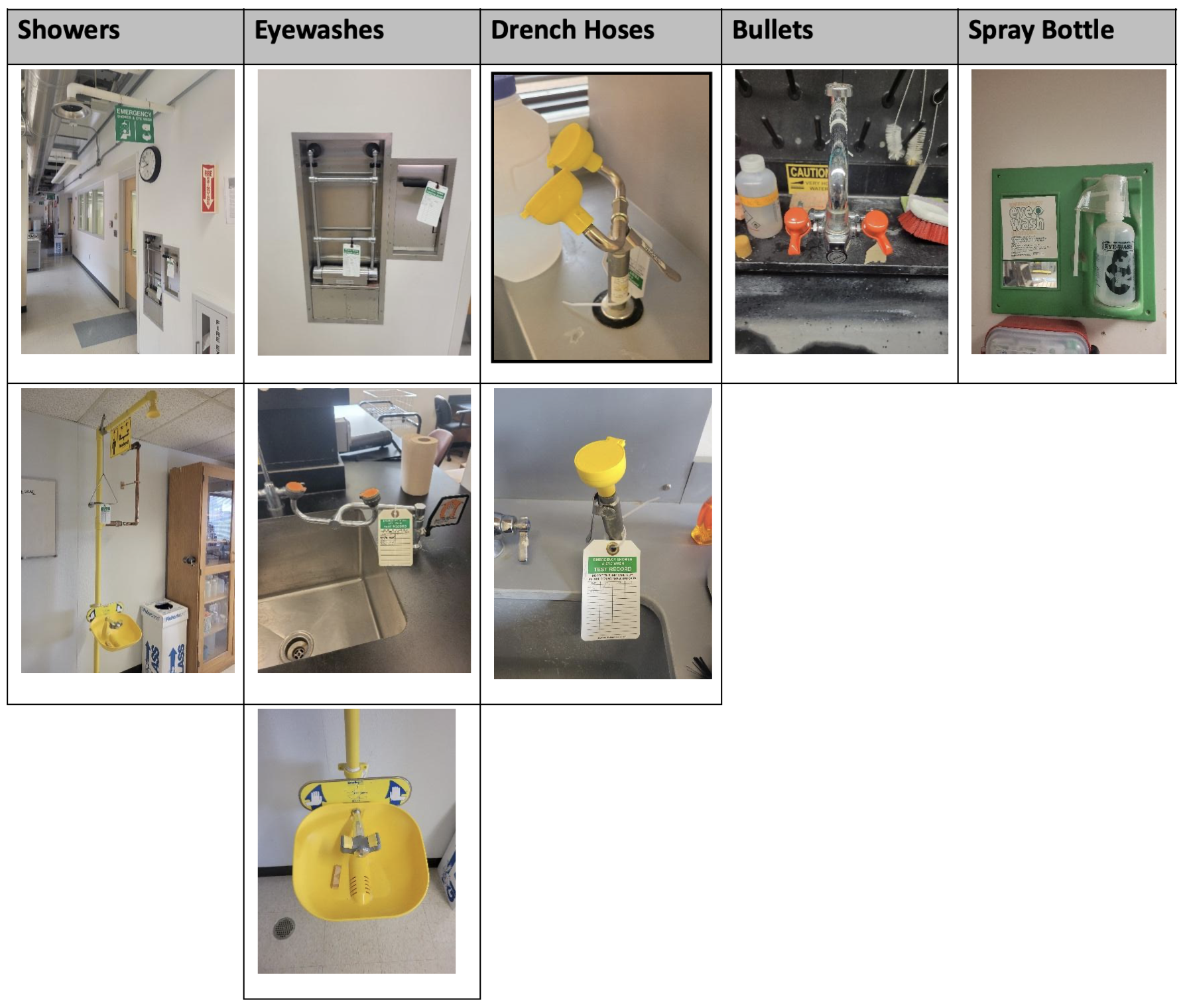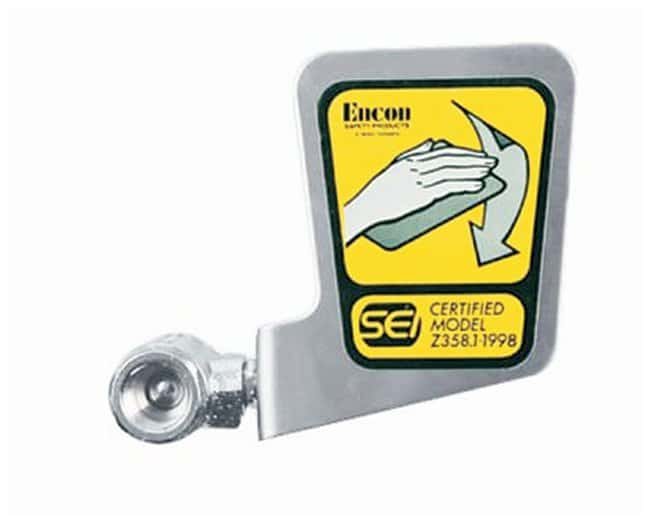
Emergency shower and eyewash stations are used as a form of emergency first aid and are directed at limiting the effects of accidental exposure to harmful materials. These pieces of equipment can be found in the majority of laboratories throughout campus. It is paramount for all laboratory staff to be familiar with the location(s) and proper use of this equipment.
Types of Emergency Showers & Eyewashes
There are five different types of safety equipment as depicted below
- Safety shower – Primarily located in hallways and near the entrances of laboratories.
- Eyewash stations – Typically located below the safety shower or near sinks.
- Drench hoses – Also located adjacent to laboratory sinks, they are similar to eyewashes but are connected to a hose instead of being stationary. (Note: Single headed drench hoses cannot take the place of an eyewash/double headed drench hose).
- Bullets – Connected to the faucets of sinks, these use the water supplied from the faucet for flushing power (Note: Bullets require the faucet to be turned ON in order for water to come out and therefore cannot take the place of an eyewash).
- Spray bottles – Located on the walls near the entrance of a laboratory. They are a one-time use bottle to spray the affected area if there is no other safety equipment nearby.


A safety shower should be used when any amount of corrosive materials comes in contact with the skin no matter how small the amount. The eyewash station should be used when dust, irritants, or chemicals enter the eye. Each type of safety equipment is operated differently but all follow a similar process. The switch, lever, handle, or paddle must be pushed or pulled to start the flow of water, and the reverse action must be performed to stop the flow. Following accidental exposure it is important to note that the safety shower or eyewash should be used for at least 15 minutes to ensure the adequate removal of harmful chemicals.
Eyewash Testing
- Eyewashes should be tested on a weekly basis. Please fill out a weekly test sheet to record your progress. For your convenience, the premade Weekly Equipment Inspection/Test Log can be used.
- See How to Test Your Emergency Eyewash Station handout for more information.
Shower Testing
- Safety Showers are tested annually by ESH. There will be a white tag initialed with the last date it was tested. Contact UMBC ESH if a safety shower does not have a white test tag or if one year has surpassed since the last date of testing.
Shower Repairs
- You can contact UMBC Environmental Safety and Health at 5-2918 or by email at esh@umbc.edu to schedule a safety shower or eyewash test. If a shower or eyewash has zero water flow you should contact Facilities Management Work Control at 5-2550 or submit a ReADY work request.